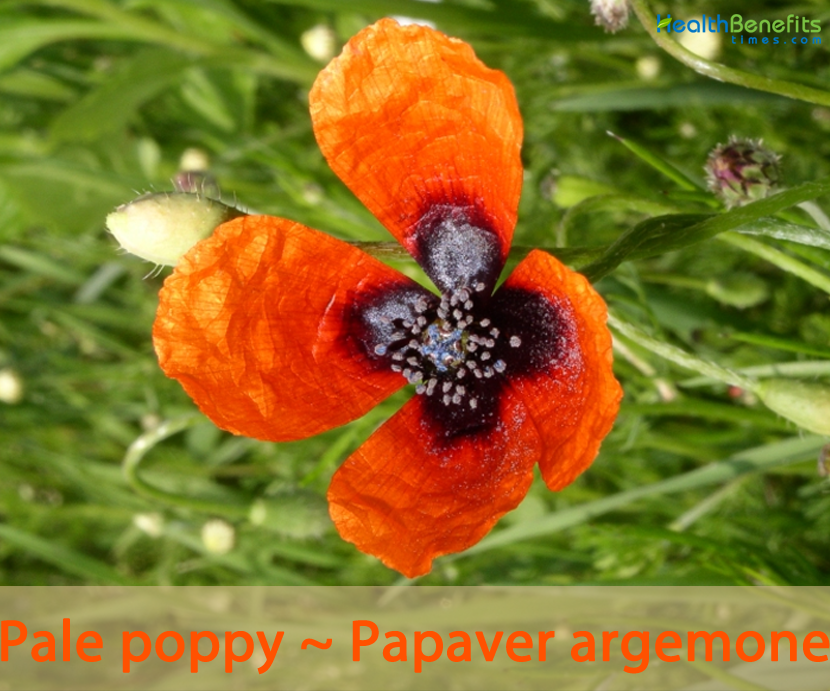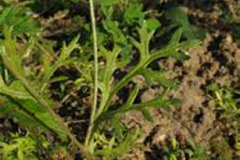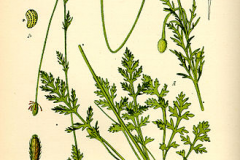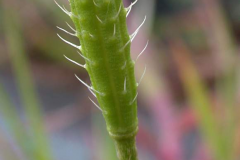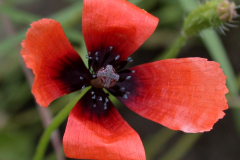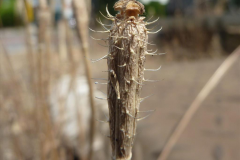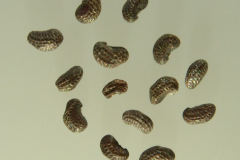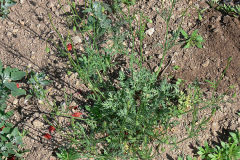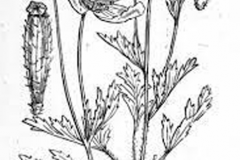| Pale poppy Quick Facts | |
|---|---|
| Name: | Pale poppy |
| Scientific Name: | Papaver argemone |
| Origin | Temperate regions of North Africa, Europe and Western Asia including Macaronesia, Canary Islands, Algeria, Egypt and Morocco |
| Shapes | Oblong-obovoid to club-shaped seed capsules about 1.5-2 cm long |
| Name | Pale poppy |
|---|---|
| Scientific Name | Papaver argemone |
| Native | Central and Western Europe, Mediterranean, Ukraine, Southern Scandinavia. It can also be found growing wild in parts of North America, where it is an introduced species |
| Common Names | Long prickly-headed poppy, Pale poppy, Prickly poppy, Sand poppy, Long-Headed Bristly Poppy, Pale rough fruit poppy, Pinnate poppy |
| Name in Other Languages | Albanian: Sygjarpëri Arabic: خشخاش أرجموني Basque: Orburuiska Belarusian: Mak argemona (Мак аргемона) Catalan: Rosella de flor petita Croatian: Pješčarski mak Czech: Mák polní Danish: Kølle-Valmue, Køllevalmue Dutch: Ruige klaproos, Stekelpapaver Estonian: Liivmagun Finnish: Hietaunikko, Hietonikko English: Long prickly-headed poppy, Pale poppy, Prickly poppy, Sand poppy, Long-Headed Bristly Poppy, Pale rough fruit poppy, Pinnate poppy Estonian: Liivmagun Finnish: Hietaunikko French : Pavot argémone, Pavot-coq, Pavot rude, Coquelicot argémone, poinceau German : Sandmohn, Sand-Mohn Greek: Trichotí paparoúna (τριχωτή παπαρούνα) Hebrew: Parag mo’orach, פָּרָג מָאֳרָךְ Hungarian: Ordögmák Ingush: Aling argemone (Алинг аргемона) Italian: Papavero selvatico, Papavero spinoso, argemona, papavero argemone, papavero peloso, papavero smilzo Kazakh: Apïın köknäri (Апиын көкнәрі) Latvian: Sarainā magone Lithuanian: Smiltyninė aguona Lower Sorbian: Pěskowy mak Norwegian: Klubbevalmue, Klubbevallmue Persian: خشخاش بیابانی Polish : Mak piaskowy Portuguese: Papoila-longa-peluda. Quechua: K’ita p’akincha Russian: Mak argemona (Мак аргемона), mak argemone (мак аргемоне), mak argemonovyy (мак аргемоновый), mak kolyuchyy (мак колючий), mak polevoy (мак полевой) Slovak: Mak poľný Slovene: Peščeni mak Spanish: Amapola espinosa, Amapola macho, Rosella de flor petit, Amapola, amapola de flor pequeña, Swedish: Spikvallmoe, Spikvallmo, Hietaunikko Turkish: Kum haşhaşı Ukrainian: mak piskovyy (мак пісковий), mak polʹovyy (мак польовий) Upper Sorbian: Mały mak Welsh: Drewg Hirben Gwrychog, Pabi Bychan, Pabi Gwrychog, Pabi Hirben Gwrychog, Pabi Penwrychog |
| Plant Growth Habit | An annual or biennial herb |
| Growing Climates | Fields and disturbed soils (including ploughed), mesic to dry waste places |
| Soil | Prefers a well-drained sandy loam in a sunny position. Does not do well on wet clay soils but succeeds in most other soils. Plants usually self-sow freely when growing in suitable conditions so long as the soil surface is disturbed |
| Plant Size | 10–50 cm tall |
| Stem | Stems ascending to erect, simple or more usually branched, stiff-hairy |
| Leaf | Basal leaves are numerous, oblanceolate, divided into 2-3 pairs of primary lateral lobes which are again divided, long-stalked, stiff-hairy, 8-15 cm long. Stem leaves are similar, not much reduced above. |
| Flowering season | May and July |
| Flower | The flowers have four slightly overlapping red petals, each with a dark base. They can measure 2–5.5 cm (0.79–2.17 in) across, with pale blue anthers and 4-6 stigmas |
| Fruit Shape & Size | Oblong-obovoid to club-shaped seed capsules about 1.5-2 cm long |
| Season | oblong-obovoid to club-shaped seed capsules about 1.5-2 cm long |
Plant Description
Pale poppy is an annual or biennial herb that normally grows about 10–50 cm tall. The plant is found growing in fields and disturbed soils (including ploughed), mesic to dry waste places. The plant prefers a well-drained sandy loam in a sunny position. It does not do well on wet clay soils but succeeds in most other soils. Plants usually self-sow freely when growing in suitable conditions so long as the soil surface is disturbed. Its 15–50 cm (5.9–19.7 in) long, branching stems are ascending to erect, simple or more usually branched and are coated in stiff prickly hairs.
Leaves
Basal leaves are numerous, oblanceolate, divided into 2-3 pairs of primary lateral lobes which are again divided, long-stalked, stiff-hairy, 8-15 cm long. Stem leaves are similar, not much reduced above.
Flowers
Inflorescence of solitary, terminal, erect flowers and buds nodding. Flower stalks are stiff-hairy. The flowers have four slightly overlapping red petals, each with a dark base. They can measure 2–5.5 cm (0.79–2.17 in) across, with pale blue anthers and 4-6 stigmas. Flowering normally takes place in spring to summer, between May and July.
Fruits
Fertile flowers are followed by oblong-obovoid to club-shaped seed capsules about 1.5-2 cm long. They are prominently ribbed, covered with stiff bristles.
Traditional uses and benefits of Pale Poppy
- An infusion or syrup made from the petals is used as a sudorific.
- In the past, the pale poppy was used in herbal medicines.
Other Facts
- The petal of the poppy was once used in folklore, as a test of faithfulness.
- A petal was placed in the palm of the loved ones hand and if when stuck with a fist and produced a snapping sound, the loved one was true.
Precautions
- This plant is toxic to mammals, though the toxicity is low.
- The seed is not toxic.
References:
https://www.itis.gov/servlet/SingleRpt/SingleRpt?search_topic=TSN&search_value=504109#null
https://pfaf.org/user/Plant.aspx?LatinName=Papaver+argemone
https://www.cabi.org/isc/datasheet/116109
http://www.worldfloraonline.org/taxon/wfo-0000480350
https://gd.eppo.int/taxon/PAPAR
https://en.wikipedia.org/wiki/Papaver_argemone
https://plants.usda.gov/home/plantProfile?symbol=PAAR3


